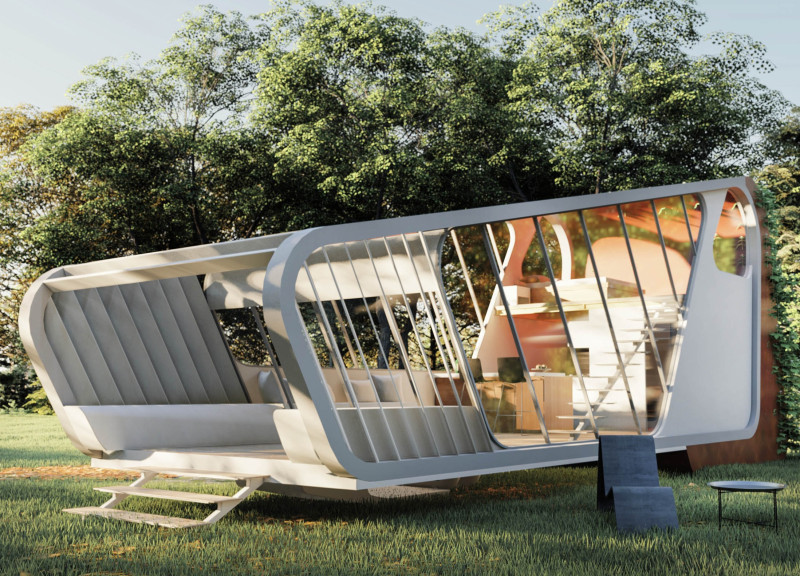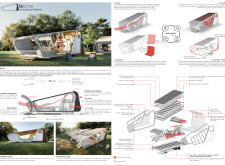5 key facts about this project
Biome: Recharging Habitats is designed to create a sustainable living environment in an urban context. It addresses modern challenges such as pollution and urban congestion through effective strategies for energy management, air quality, and water sustainability. The design focuses on establishing a connection between residential spaces and the natural world, supporting individual well-being and environmental health.
Air Quality Management
The design uses an aerodynamic shape to improve air circulation inside the structure. This allows for the efficient collection of warm air, which can then be ventilated in warm climates or retained in cooler temperatures for comfort. A key feature includes phytoremediating algae placed in the facade, which actively cleans the surrounding air through natural processes. This integration enhances local air quality, showcasing a commitment to environmental care.
Energy Efficiency
Energy generation is central to Biome, utilizing bidirectional Solar PVC on the roof along with Building Integrated Photovoltaic Cells (BIPVC) incorporated in the facade. These systems provide a consistent source of renewable energy to power the module's appliances, reducing reliance on traditional energy sources. By integrating energy technologies within the structure, the design promotes efficient energy use while aligning with sustainable practices.
Water and Waste Systems
Water management is carefully addressed with systems for rainwater harvesting and filtration. Waste from toilets is separated into solid and black components; the solid waste is transformed into compost through an anaerobic treatment process, while black water is converted into grey water for use in phytoremediation. This strategy emphasizes efficient resource use and supports the design’s sustainability goals.
Community Living Spaces
Biome is designed to encourage community interaction with designated areas for cooking, resting, living, studying, and bathing. The layout provides spaces for residents to engage with one another in shared environments, reflecting modern trends in urban living that emphasize social connection. Each space is thoughtfully planned to enhance resident experience, ensuring both convenience and comfort in a sustainable environment.
Rainwater is collected and stored in large tanks, providing a reliable supply for indoor use and reducing dependence on outside water sources. The integration of these features demonstrates a commitment to creating a living space that is adaptable to environmental conditions, fostering a positive relationship between architecture and nature.




















































